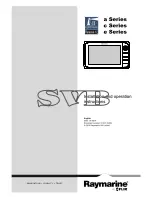
035-19670-003 Rev. A (1004)
20
Unitary Products Group
DIRECT DRIVE MOTORS
Adjustment of Fan-Off Control Settings
This furnace is equipped with a time-on/time-off heating fan control. The
fan-on is fixed at 30 seconds. The fan-off delay is factory set to 60 sec-
onds; however, it is field-adjustable to 90, 120 or 180 seconds. The fan-
off setting must be long enough to adequately cool the furnace, but not
so long that cold air is blown into the heated space.
Adjustment of Fan Control Settings
This furnace is equipped with a time-on/time-off heating fan control. The
fan on delay is fixed at 30 seconds. The fan off delay has 4 settings (60,
90, 120 and 180 seconds). The fan off delay is factory set to 120 sec-
onds. The fan-off setting must be long enough to adequately cool the
furnace, but not so long that cold air is blown into the heated space. The
fan-off timing may be adjusted by positioning the jumper on two of the
four pins as shown in Figure 26.
Heating Indoor Fan Off Delay
The jumper pins are located on the main control board. Refer to Figure
30 for the jumper settings to obtain the desired fan OFF delay. The
blower off delay must be long enough to adequately cool the furnace,
but not so long that cold air is blown into the living space.
The blower on delay is fixed at 30 seconds and can not be adjusted.
Continuous Blower Operation
The blower will run continuously whenever the wall thermostat fan
switch is in the "ON" position. The furnace blower will run at the speed
selected on the "FAN SPEED" jumpers on the main control board (HI
COOL, LO COOL, HI HEAT or LO HEAT).
Intermittent Blower Cooling
On cooling/ heating thermostats with a fan switch, when the fan switch
is set in the auto position and the thermostat calls for cooling, a circuit is
completed between the R, Y and G terminals. The motor is energized
through the Y1 cool terminal and runs on the speed selected on the
board. The fan off setting is fixed at 60 seconds for maximum cooling
efficiency furnace control.
Intermittent Blower Heating
On cooling/ heating thermostats with a fan switch, when the fan switch
is set in the auto position and the thermostat calls for heating, a circuit is
completed between the R and W terminals. The indoor fan motor is
energized through the W1 heat terminal and runs on the speed selected
on the furnace control board.
ADJUSTMENT OF TEMPERATURE RISE
The temperature rise, or temperature difference between the return air
and the heated supply air from the furnace, must be within the range
shown on the furnace rating plate and within the application limitations
The manifold pressure must be checked with the screw-off cap for
the gas valve pressure regulator in place. If not, the manifold pres-
sure setting could result in an over-fire condition. A high manifold
pressure will cause an over-fire condition, which could cause pre-
mature heat exchanger failure. If the manifold pressure is too low,
sooting and eventual clogging of the heat exchanger could occur.
Be sure that gas valve regulator cap is in place and burner box to
gas valve pressure reference hose is connected.
MAINFOLD PRESSURE “U” TUBE CONNECTION
FIGURE 28:
Reading Gas Pressure
Do not energize more than one motor speed at a time or damage to
the motor will result.
U-TUBE
MANOMETER
3.5 IN
WATER
COLUMN
GAS
PRESSURE
SHOWN
GAS
BURNERS
OUTLET
PRESSURE TAP
GAS VALVE
FLAME
SENSOR
1/4” TUBING
MAINIFOLD
PIPE
FIGURE 29:
Furnace Control Board
The temperature rise, or temperature difference between the return
air and the supply (heated) air from the furnace, must be within the
range shown on the furnace rating plate and within the application
limitations shown in Table 8 “ELECTRICAL AND PERFORMANCE
DATA”.
The supply air temperature cannot exceed the “Maximum Supply
Air Temperature” specified in these instructions and on the fur-
nace rating plate. Under NO circumstances can the furnace be
allowed to operate above the Maximum Supply Air Temperature.
Operating the furnace above the Maximum Supply Air Temperature
will cause premature heat exchanger failure, high levels of Carbon
Monoxide, a fire hazard, personal injury, property damage, and/or
death.
Y1
Y2
Y
W1
W
W2
R
G
C





































